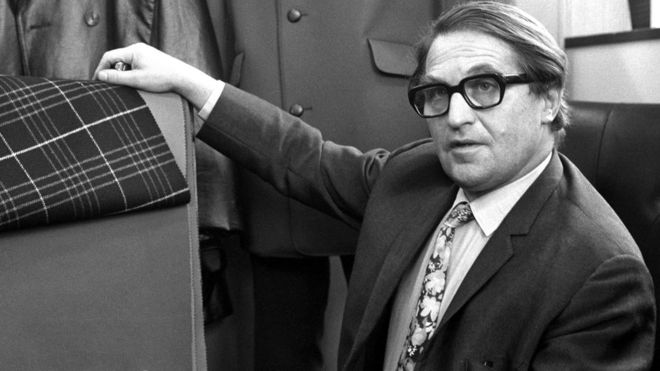A new exhibition explores the colorful life of the textile designer Joseph Kagan, who escaped a WW2 ghetto and fled to England with his family. The exhibition takes the form of an interactive installation; the artist is Kagan’s daughter, Jenny.
Kagan was born in Kaunas in 1915 to a Jewish family. In 1933, he arrived in England to study textiles at Leed University. In 1940, during one trip back to Lithuania to visit relatives, the USSR invaded his home country. The family textile mill was taken from their control under the Soviets, but after some strategic maneuvering, Kagan was made to be the foreman of the factory.
The efforts to regain power over his livelihood were arduous, but they paled in comparison to the dreadful experiences he faced once the Nazis took over Lithuania in 1941. Years later, Kagan described life under the Soviets as a training camp for the life he would experience under the Germans. After the German Nazis invaded, Kagan and 30,000 more Lithuanian Jews were rounded up into the Kaunas ghetto.
Jenny Kagan, the artist behind this deeply personal look at her father’s life, says her father survived for two years by living on wits and good fortune. But in 1943, the German SS took over and reclassified the area; it was now officially a concentration camp. Kagan was married to Margaret Stormas, and went into hiding with her and his mother. They hid in a six by six-foot attic of a foundry.
The couple referred to the hiding spot as “the box”. They were able to remain undetected for nine months before the Soviets took Lithuania back into their control in 1944. Finally, in 1946, they escaped Lithuania for Romania. In Bucharest, the British Consulate took them in before they left mainland Europe for England. It was time to start a new life in Huddersfield.
Kagan and his wife were two of the 500 Jews from Kaunas that survived World War II. Jews were persecuted and poor at this point. Therefore, Kagan resorted to the only trade he knew, which was textiles. He began to make and sell blankets out of a steel Nissen hut. The name of his small business was Kagan Textiles Ltd. The company grew with time, and eventually he had 1,000 people working for him at his factory in Elland, near Halifax.
Kagan was responsible for developing Gannex – a lightweight fabric used to make raincoats. Prime Minister Harold Wilson, the Queen, and the Duke of Edinburgh were all fans of his product. He forged a friendship with Harold Wilson, who was from Huddersfield. Kagan supported Wilson’s political ambitions and in 1976, after Wilson retired from the political arena, Kagan was made a life peer. Prior to that, in 1970, he was knighted.
Then in 1980, Kagan’s impressive assent from the ghetto of Kaunas to high society came to a screeching halt. He was tried and found guilty of fraud before being sent to prison for ten months. Kagan was disgraced and stripped of his knighthood. Once he was released from jail, he returned to the House of the Lords to campaign for penal reform. He worked hard at it until he died in 1955. His wife, Margaret, only just passed away in 2013.
Jenny Kagan says, “My father was a larger-than-life character who courted controversy throughout his life. His later trials and tribulations are well-documented, but this show tells the story of my parents as young people, who survived against all the odds, because of both luck and their ingenuity.”
The exhibition can be seen at The Viaduct, Dean Clough, Halifax, until July 10th.
